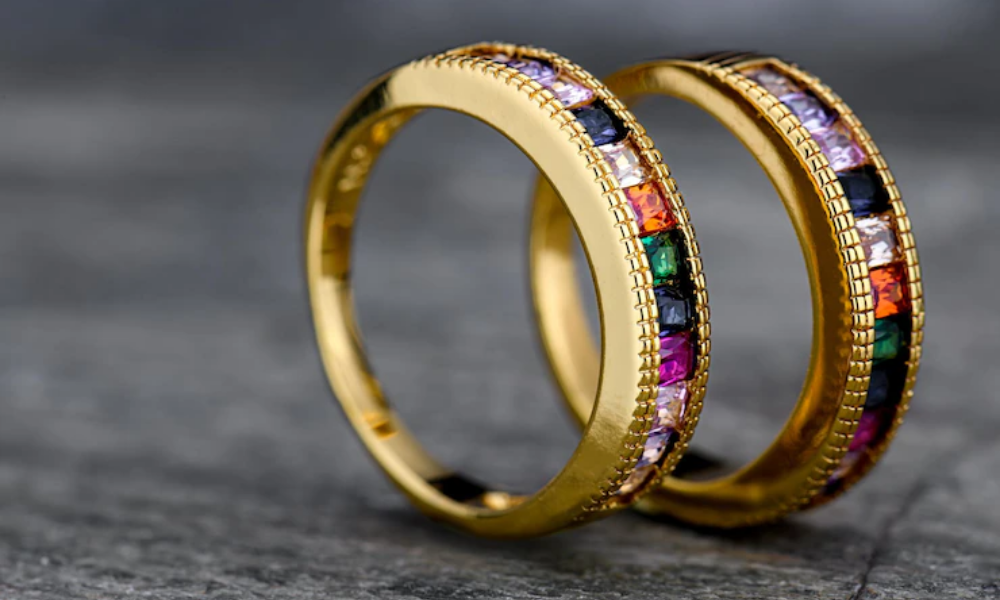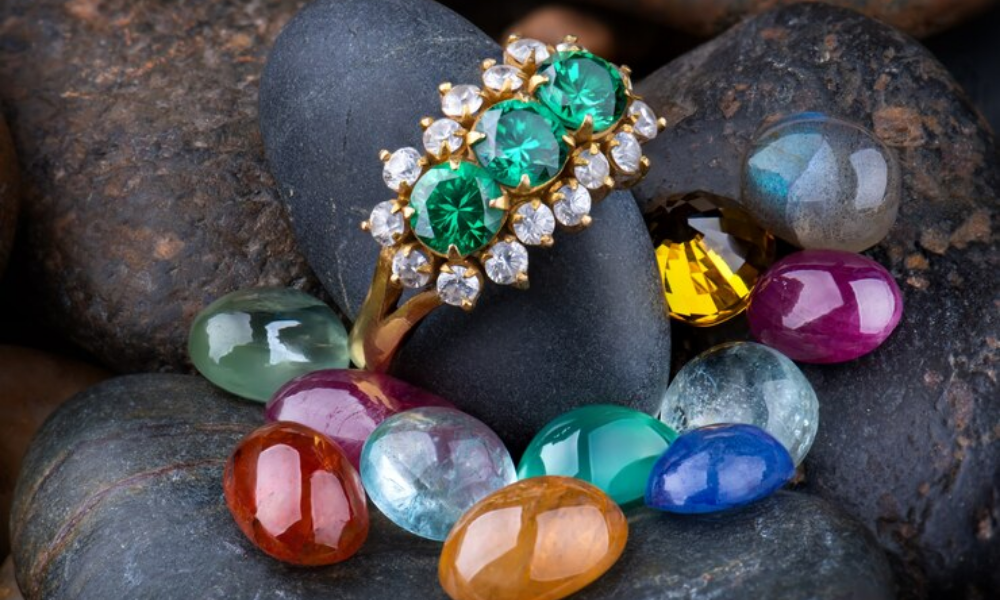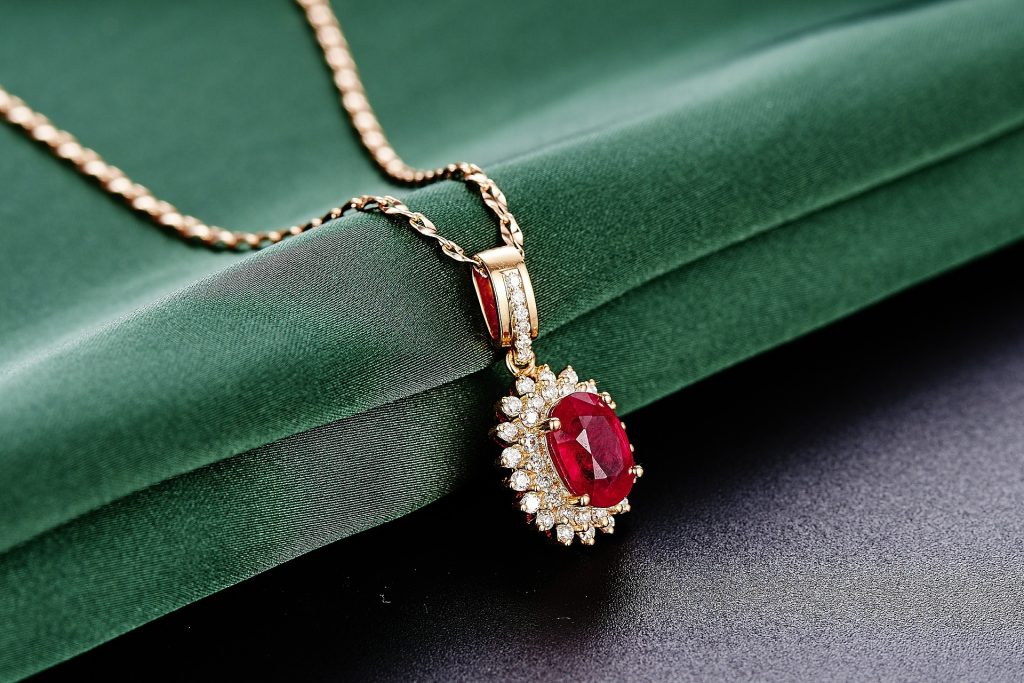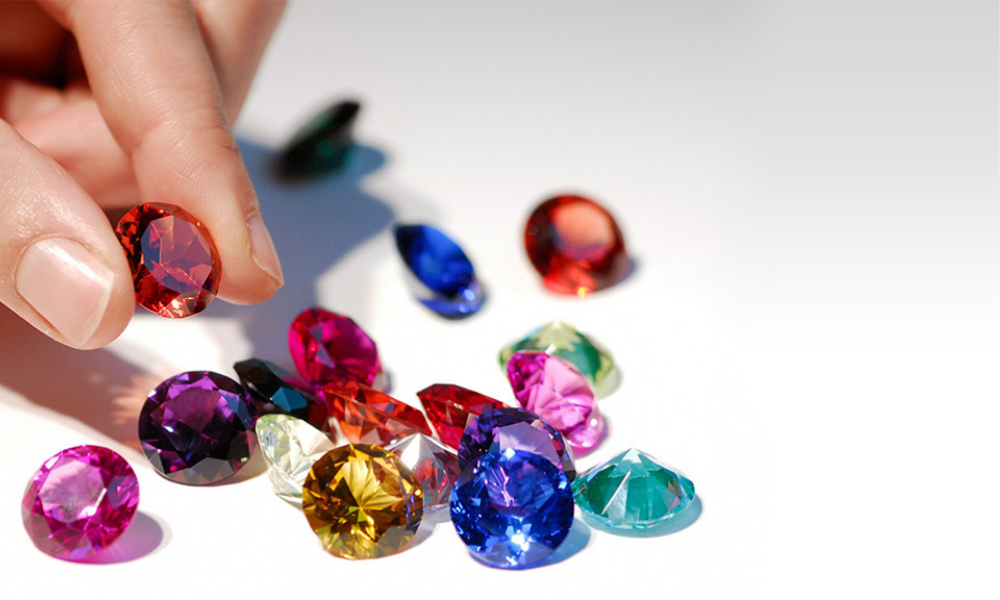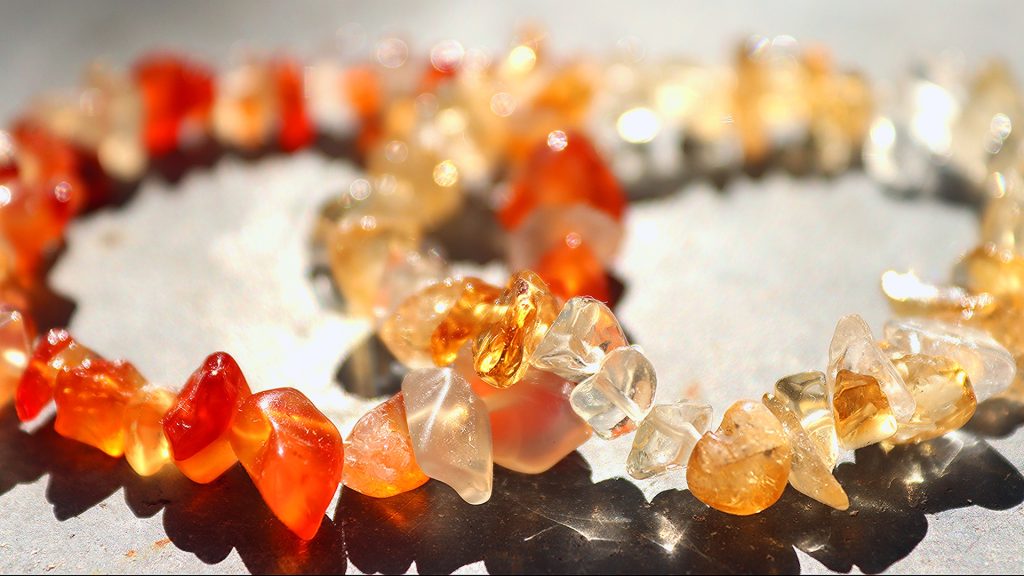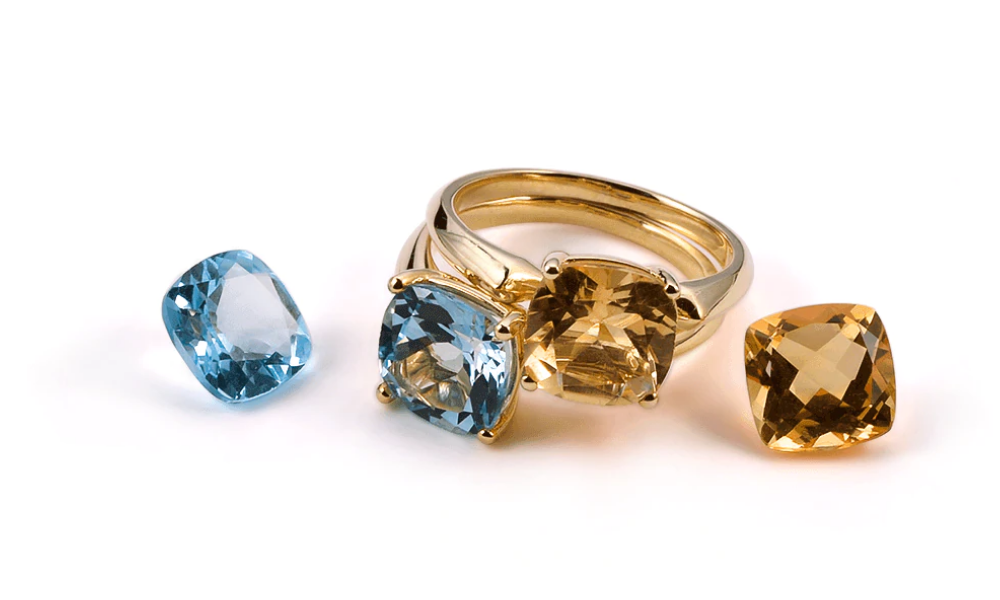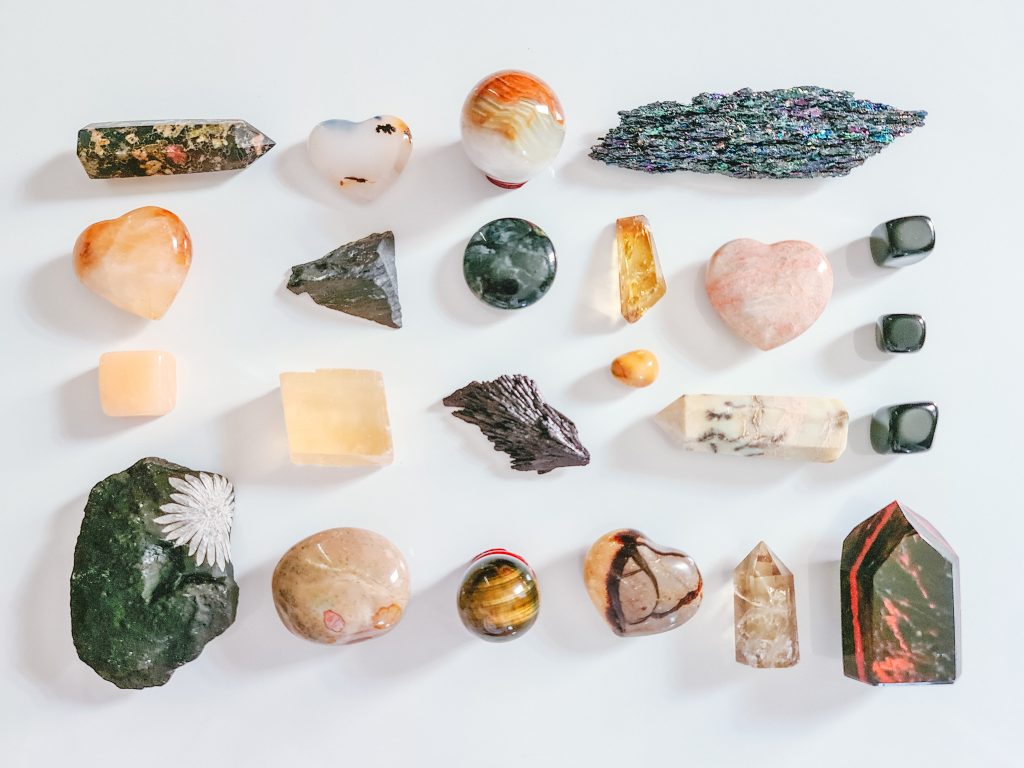If you are interested in learning how to identify gemstones, you can take a few steps to get your career underway. It is easiest to determine whether a stone is a diamond, ruby, or sapphire by making broad observations, the initial stage in determining its type. The next step is to magnify the image with a 10x or higher magnification. A few processes are required to determine the color of a stone, including evaluating its transparency, hue, and phenomena.
The hue of a gemstone is the next step in the identification process. If a stone is colorless, it should be utterly devoid of any tinge of color, and if it is colored, it should be dark and rich in color. The higher the grade of the gemstone, the deeper the color of the gemstone. This method, however, can be misleading, as sapphire can appear blue, as the name implies, but can also be found in other colors such as pink, green, and yellow.
It can be entertaining and beneficial to go gemstone hunting on your own. A gemstone you’ve discovered yourself is ideal as a centerpiece for a momentous occasion or as part of a thoughtful gift.
Tips To Identify Gemstones
Each gem species possesses distinctive physical and visual characteristics that are stable within certain limitations and may be determined objectively to a certain extent for each gem species. However, one fundamental element that must never be overlooked is the significance of a visual identification system. It is possible to classify an unknown stone by accurately identifying its color, cut, transparency, luster, dispersion, heaviness, and any other perceptual features, among other things. It is also crucial to consider the type of light used to observe each feature under consideration.
Most gemstones can be immediately identified by observing a few simple features, such as color and weight. However, if you want a more detailed and exact identification, you will need to employ specific instruments to see into the stone and investigate the internal structure.
Using Charts For Identification
- Invest In A Chart For Identifying Gemstones
If you expect to be recognizing gemstones frequently, it’s a good idea to invest in a printed chart or reference manual.
When in doubt, search for a book or chat with the Gemological Institute of America’s stamp of approval (GIA).
- Basic Charts Can Be Found On The Internet
If you only need to identify a gemstone on rare occasions, you may be able to complete the process by using online gemstone identification charts. These charts are far less detailed and extensive, although they could be helpful in a situation.
Verifying That The Stone Is A Gemstone
- Feel the surface of the stone
A rough or sandy-textured stone should not be classified as a gemstone.
- Examine its adaptability
An easily malleable stone—that is, one that can be shaped by hammering, crushing, or bending it—is more likely to be a metallic ore than a gemstone.
A crystalline structure can be found in genuine gemstones. Cutting, fracturing, and abrasion can be used to shape this structure, but it has set planes that cannot be altered by pressure alone.
If you don’t want to break a stone, don’t hit it with a hammer. Although genuine gemstones do not bend or reshape, they do break.
- Find Out Which Materials Aren’t Considered Gemstones.
Pearls and fossilized wood, for instance, can be wrongly labeled as jewels, but they do not meet the criteria in the strictest sense of the term.
- Watch out for synthetics
Synthetic stones have the same structure, chemical composition, and physical attributes as natural stones, but they are manufactured in a laboratory rather than occurring naturally. Several traits can usually be used to identify a synthetic.
Curve growth patterns inside synthetic stones are more common than angular ones.
Gas bubbles that are spherical and come in long strings are frequently an indicator, but be cautious because a gas bubble in an inclusion might arise naturally.
Platelets of platinum or gold can adhere to synthetic stones.
Fingerprint-patterned inclusions, nail-shaped inclusions, chevron (v-shaped) development patterns, wispy veil-like inclusions, and internal columnar structures are all common in synthetics.
- Be Wary Of Imitations
An imitation stone is a material that, at first glance, appears to be a genuine gemstone despite being produced of a different material. These stones can be natural or artificial, but a few approaches can be used to identify them in either case. When inspecting Turquoise, Lapis, Sapphire, Ruby, and Emerald, pay careful attention because there are various treatments available on the market that make the stones look natural.
An imitation’s surface may appear pitted and uneven, similar to an orange peel.
Swirl patterns, known as “flow lines,” can be found in some imitations.
Imitations frequently contain large, spherical gas bubbles.
Imitations have a lighter feel than their original equivalents.
- Determine Whether The Gemstone Is A Pieced-Together Piece.
Stones that have been assembled are made up of two or more materials. Although synthetic components are sometimes blended in, these stones may be made of genuine gems.
When inspecting the stone for evidence of assembly, use a penlight to illuminate it.
Look for luster differences or colored vs. colorless cement.
Look for the “red ring effect” as well. Look for a crimson ring along the stone’s outer edge when you turn it over. You most likely have an assembled stone if you see the red ring.
Making Fundamental Observations
- Look At The Color
The hue of the gemstone is frequently the first indicator. Hue, tone, and saturation are the three parts that make up this component.
If you have a dark stone and need to determine whether it is black, dark blue, or another deep hue, do not flashlight into it to check its color.
The term “hue” refers to the overall color of the stone. Make your statement as specific as possible. If a stone is yellowish-green, describe it as such rather than simply saying “red.” The stone hue is divided into 31 different colors by the GIA.
The term “tone” describes how dark, medium, light, or somewhere in-between color is.
The term “saturation” refers to the degree of color intensity. Determine whether the color is warm (yellow, orange, or red) or cold (blue, green, or purple) (purple, blue, green). When using warm hues, look for brown tones in the stone. Look for grey hues in the stone if you want cold colors. The less vivid the stone hue is, the more brown or grey you see.
- Take Note Of The Transparency
The gemstone’s transparency defines how light passes through it. A stone might be translucent, opaque, or transparent.
Transparent stones allow you to see through them (for example, diamonds).
Translucent stones can be seen, but the image is distorted by color or haze (example: amethyst or aquamarine).
Opaque stones can’t be seen through (example: opal).
- Check The Weight Or Calculate The Specific Gravity
By bouncing a gemstone in your hand, you may assess its heaviness (how heavy it is). This is a quick and straightforward approach to estimating the weight of a stone without having to undertake complicated specific gravity tests or computations.
To determine heaviness, bounce the stone in your palm and ask yourself if it feels as heavy as you’d anticipate for its size, heavier, or surprisingly light.
Gemologists no longer utilize specific gravity readings, and weight measures are used instead as a more accurate estimate.
Aquamarine, for example, has a low heaviness, yet blue topaz, which looks similar, has a high or heavy heft. In the same way, diamond is lighter than synthetic cubic zirconia.
- Take Note Of The Cut
While this isn’t a surefire identification method, certain gemstones are more likely to be cut in specific ways. Ideal cuts are frequently determined by how light bounces off the stone’s crystalline structure.
Faceted, cabochon, cameo, bead, and tumbling are the most frequent cut styles you’ll see. You’ll usually find sub-types inside each of these main cut styles.
Examining The Gemstone In Deep Details
- Consider Whether Damage Testing Are Necessary
If you need to keep the gemstone in its existing state, you may want to avoid a few identification tests. This includes tests like hardness, streak, and cleavage.
Some stones are more complex than others, and the Mohs’ Scale is commonly used to determine this. Scratch the gemstone’s surface with the various substances given in a hardness kit. If you can scrape the stone, it’s softer than whatever you scratched it with. The stone is more challenging than the substance if it cannot be scratched.
Drag the stone across a ceramic plate to see if it leaves a streak. Compare the streaks on a streak chart to the streaks left behind.
The way a crystal splits is referred to as “cleavage.” Examine the area inside the chips if there are chips along the surface. Otherwise, you’ll have to hit the gemstone hard enough to break it. Consider whether the area is conchoidal (like the rings on a seashell), linear (like steps), granular, splintery, or uneven.
- Examine Optical Phenomena
Only specific stones exhibit optical phenomena. Color shifts, asterisms, bands of moving light, and other phenomena may be visible depending on the stone.
Pass a penlight across the stone’s surface to look for optical phenomena.
One of the essential optical phenomena to look for is color change, which should be verified on every stone. Look for color differences between natural, incandescent, and fluorescent light.
- Take A Look At The Shine
The quality and intensity with which a surface reflects light are referred to as luster. Reflect light off the gemstone area with the best polish when evaluating for luster.
Turn the stone to see if it has luster by enabling light to reflect off its surface. Examine the stone with both your naked eye and a 10x loupe.
Determine whether the stone is dull, waxy, metallic, gleaming (adamantine), glassy (vitreous), greasy, or silky in appearance.
- Keep An Eye On The Gemstone’s Dispersion.
Dispersion is when a stone divides white light into its spectrum hues, and fire is the visible exhibition of dispersion. Examine the size and intensity of the “fire” to determine the stone’s identity.
Examine the fire within the stone with a penlight shining through it. Consider whether the fire is faint, moderate, firm, or strong.
- Calculate The Refractive Index Of A Material
A refractometer can be used to determine the refractive index, and you can use this instrument to determine the degree to which the stone’s light path has been affected. Because each gemstone has its own RI, determining the RI of a sample might assist you in figuring out what kind of stone it is.
- Consider Putting Your Birefringence To The Test As Well
Refractive index and Birefringence are linked. You will flip the gemstone on the refractometer six times during the birefringence test and record the results.
- Double Or Single Refraction Should Be Checked
This test can be used on both translucent and transparent stones. To identify the stone, establish whether it is singly refractive (SR) or doubly refractive (DR). Aggregate is another term for some stones (AGG).
What Is The Best Way To Figure Out What Kind Of Stone, Crystal, Or Gemstone I Have?
It is a piece of mineral crystal that is cut and polished and used to create jewelry and other adornments. Gemstones are also known by other names such as fine gems, jewels, precious stones, and semiprecious stones. There is no globally recognized grading standard for gemstones, and the Gemological Institute of America created a system for grading diamonds, which is used today. Historically, all gemstones were rated using the naked eye to determine their quality.
Gemstones are the subject of numerous publications and television series. Keep in mind that some gemstones are available in various colors and sizes. For example, a greenish sapphire or a purplish ruby are beautiful gemstones. You may put Turquoise through its paces by coating it in pure molten gold. Always be cautious not to injure yourself, and if possible, utilize a machine or gadget to ensure your safety while working. If the gold does not adhere to the Turquoise, it is genuine Turquoise.
Why Do Gemstones Come In A Variety Of Colours?
Every gemstone has a chemical and atomic structure distinct from the others. Carbon is used to create diamonds, while aluminum chloride is used to create rubies and sapphires, and so on. This, together with the existence of contaminants, results in the absorption of various wavelengths of light. As a result, gemstones have a wide range of colors.
When it comes to gemstones, each mineral absorbs some light and refracts some light, and the wavelength of the refracted light defines the color we perceive in the gem. Depending on how the gemstone is generated with impurities within it, several hues of impurities can be present in the gemstone.
How Can I Check The Quality Of My Gemstone At Home?
The first step is to examine the stone with your naked eye to see whether there are any inclusions. For inclusions that are difficult to see with the naked eye, a magnifying glass with at least 10X magnification should be used to determine whether or not the gemstone includes any inclusions.
A genuine diamond should be able to cut through glass quickly, and however, a fake diamond will not. For gemstone hardness, sapphires are close behind diamonds on the list. Because it is simply a robust and durable stone, there should be no signs of wear and tear. There are nicks in the stone, which indicates that the stone is most likely a fake gemstone.
How Can I Know Whether A Gemstone Is Genuine?
The refractive index of transparent gemstones is a critical optical feature that may be used to identify and authenticate gemstones, and it is also a significant predictor of gemstone authenticity. Using a refractometer, you can determine the total internal refraction, and you can identify gemstones with refractive indexes (RI) ranging from 1.30 to 1.81.
I would recommend taking your gemstones to a reputable gemologist or a local jeweler. You will be able to have your stones authenticated and appraised at this location. If, on the other hand, you want to purchase gemstones, please make sure that you purchase them from reliable vendors who sell stones that have previously been certified.
Conclusion
As a result, gemstones are identified using the same scientific methods used to identify minerals. However, because they are both beautiful and expensive, no negative tests that leave a mark on the stone are performed on them. To evaluate gemstones, several scientific tools have been developed specifically for this purpose.
The gemstone color can help you narrow down your selections, even though the streak test cannot tell you what type of gemstone you are buying. The color wheel created by the GIA contains information on 31 different colors. In general, the color of a gemstone should be consistent with the color gemstones color, but some hues are more easily recognized than others. When purchasing a gemstone, it is best to take the time to determine the hue of the gemstone.

